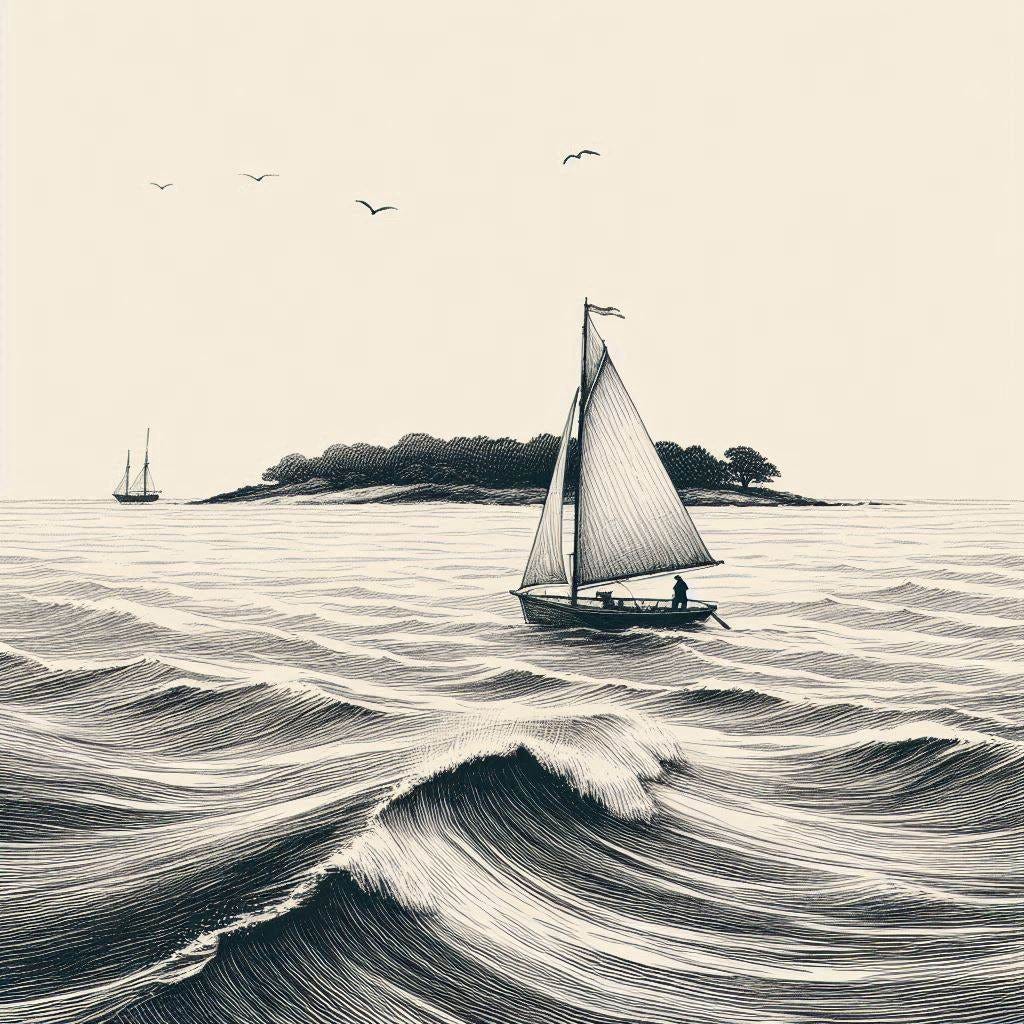Persistence of Memory
Article by by Brian Nazinitsky
There are times that we sail and the day is extraordinary, yet our recollection fades as quickly as the day. Then there are days that are ordinary, but our memories persist in the minutest detail. My older son and I had such a day to remember about four years ago.
The early June forecast was not the most promising; winds 18 -20 knots, partly cloudy sky, wave heights near 2-3 feet and temperatures a high of only 65° F for Smithtown Bay on Long Island Sound. However, my soon to be fifteen year old son and I were itching to get out on the boat, and the outgoing tide at around 10 a.m. would make the transit from the Nissequogue River to the Sound easy.
Our Precision 16.5, Peptide, takes about 30 minutes to raise the mast, attach boom and sails, and set out the dock lines and fenders. The ramp is very shallow and tight, with the opposite bank only 50 feet away and thick mud ready to suck in the keel 20 feet before that. We have become very good at kicking the bow out from the finger pier, and motoring out in a tight turn to port and through the narrow channel which leads to the main river and then the Sound. On the falling tide we barely needed the engine, but I knew better than to raise the sails until we reached the sound. Tricky side currents, sandy or muddy shoals and a mooring field, keep the boat zigzagging up the recently dredged channel following the red markers. Reeds along the edges were filled with large white egrets, and an osprey nest on a high pole. Near the mouth of the river, things become interesting. The river narrows considerably and water rushes through at about 4 knots on most days. It is also the site of the town ramp which is normally very busy with powerboats launching from the two west ramps and canoe rentals on the more shallow east ramp. Today though, the ramp was quiet, and the tide cooperative.
We motored out to the second buoy, and I raised the main while my son held the tiller. Quickly I realized that we needed a reef, and lowered the sail enough to put in the reef. The chop and waves were not the predicted 2-3 feet, but enough to send some spray in the wind, which was certainly close to 20 knots. We left the jib down, and put on an extra layer of fleece to keep us warm. My son chose the course, east to Port Jefferson, to check out the large fishing boats and fancy yachts tied up at the waterfront estates along Long Island’s “Gold Coast.” The GPS had us consistently 4.5 -5 knots beating east with higher bursts to near 6 knots. We made Port Jefferson in about an hour, but decided not to duck in past the breakwater. We eased the main and headed onto a broad reach, and had our lunch. By now the sky was completely cloudy, and any warmth from the sun was long gone. The wind also shifted and we would have a close reach home.
We aimlessly sailed east a bit more, admiring the estates, talking about crossing the Sound to Connecticut this summer, and watching the large powerboats returning to home as the weather worsened. I decided to do the same, pulled the tiller to port and tacked for home. My son pulled the mainsheet tight as we were nearly beating, the boat heeled and we hit 5.5 knots on the GPS, as the spray wet us and stung our eyes. We had grins like the Cheshire cat. We noticed that even the fishing boats had retired for the day, and we had Long Island Sound to ourselves. We sailed back in about another hour, at times rounding up and letting the main out to control the boat.
Back by the mouth of the river the tide was just turning, we dropped the main and had another easy transit past the river entrance. Just a few minutes can mean the difference between 4 knots of twisting current or a gentle push. The timing was perfect. We motored to the ramp with its small finger pier and the sun greeted us and the wind fell off. We worked quickly to haul the boat as the high tide often floods the ramp and parking lot. Boat hitched and secure, we drove the ten minutes home only to have my wife ask why we took so long; she thought we wouldn’t go out in such a blow. “How could we have not gone?” was my reply. •SCA•
First appeared in issue #90


Brian - thanks for your memory/story. I agree totally on the memory thing. It almost seems as though when we have another aboard, we gain a reflective memory. We also see it as our crew might?! As I age I notice myself not wanting to go near the 20mph wind speeds but my club chapter guys help me push through it. I've got 3 reefs on the Ilur so I go to the third. I too have sweet memories of high wind sails with my boys - and they are crystal clear because of the challenging winds but also I'm watching them deal with the excitement of trusting dear ol dad, etc..
The image that accompanies this article is fantastic. Where is it from?